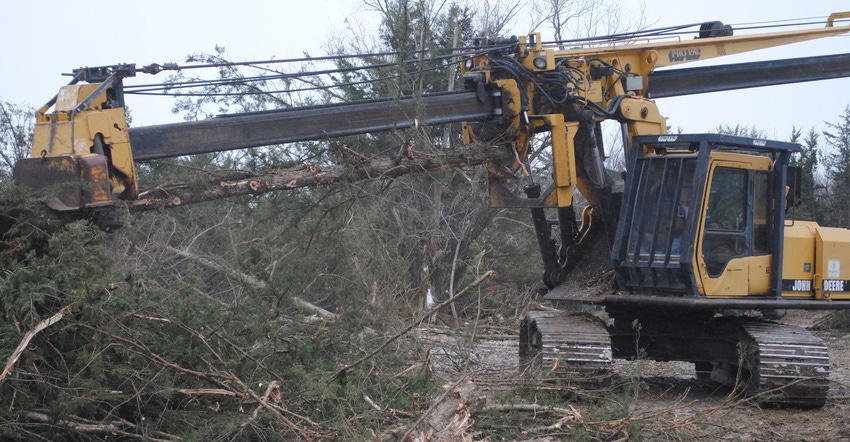
Eastern red cedar is an invasive weed when it chokes out former grazing land. In Nebraska and several Great Plains, High Plains and Midwest states, cedar is also the fastest-growing tree resource. From 2005 to 2010, about 25,000 acres per year of new cedar forest invaded former grasslands in Nebraska alone, and 13,000 acres per year of existing forest was converted to a cedar-dominant forest. However, from 2013 to 2015, the cedar forest has decreased by 30,000 acres in the state as a result of mechanical removal or prescribed burning.
According to Steve Rasmussen, Nebraska Forest Service District forester, the task of cedar removal starts with looking at landowner objectives. For most farmers and ranchers, that objective is gaining forage production for livestock by removing unwanted trees. "Cedars compete with grasses and take away from forage potential," he says. "With cedar control, the sooner you can take care of the trees, the better."
For smaller growing cedars that are 6 feet in height and shorter, prescribed fire works best. "To get a good control with fire, you may have to defer grazing for a period to allow fire fuel to build up," he adds.
"After the trees are taller than 6 feet, your best bet is mechanical control," Rasmussen says. "There have been some chemical control methods used, but I don't see them utilized much anymore," he notes. "With chemicals, you usually treat near the base of the tree, and it is taken up by the roots. But those treatments can kill grass too."
With mechanical removal, there are different types of operations. The most labor-intensive way is by hand with a brush cutter, loppers or chain saw. A hot saw or brush shear mounted on a skid loader cuts trees down so they can be pushed into a slash pile. Or landowners can use a mulching head that basically begins at the top of the tree and grinds it down to the base stump, mulching all of the material as it goes. Finally, lumber-sized trees can be cut with a hot saw and limbed out with a tree processing machine to be used for saw logs or fence posts.
"As a forester, I like to see the wood utilized when it is possible," Rasmussen says. "If the trees are large enough, it can be less expensive when you get some value out of them." Although saw logs from larger trees may not be of high value, lumber operators may remove those trees at little or no cost because they have some end-use value. Some smaller trees can also be used for shavings or biomass chips.
"Consider leaving a few trees on steep-sloped areas," Rasmussen says. "It is fine to leave a few non-seed-bearing trees to protect the soil from erosion or for wildlife or livestock shade," he says. "Farmers may also choose to leave good-shaped trees to harvest at a later time as posts or for saw logs," he adds. "These trees have minimum taper, small branches, straight stems and have usually grown in tight competition. Thinning these trees makes sense."
According to Rasmussen, cedars are often cleared from pastures, but are left growing in the first 50 to 100 feet of adjacent hardwood forests around the rangeland. "These isolated cedar trees provide a seed source for cedars to grow back into the pasture again, and they are a fire risk, providing ladder fuel in the hardwoods for wildfires. So, they should be controlled as well," Rasmussen says.
Learn more about cedar control online.
About the Author(s)
You May Also Like






